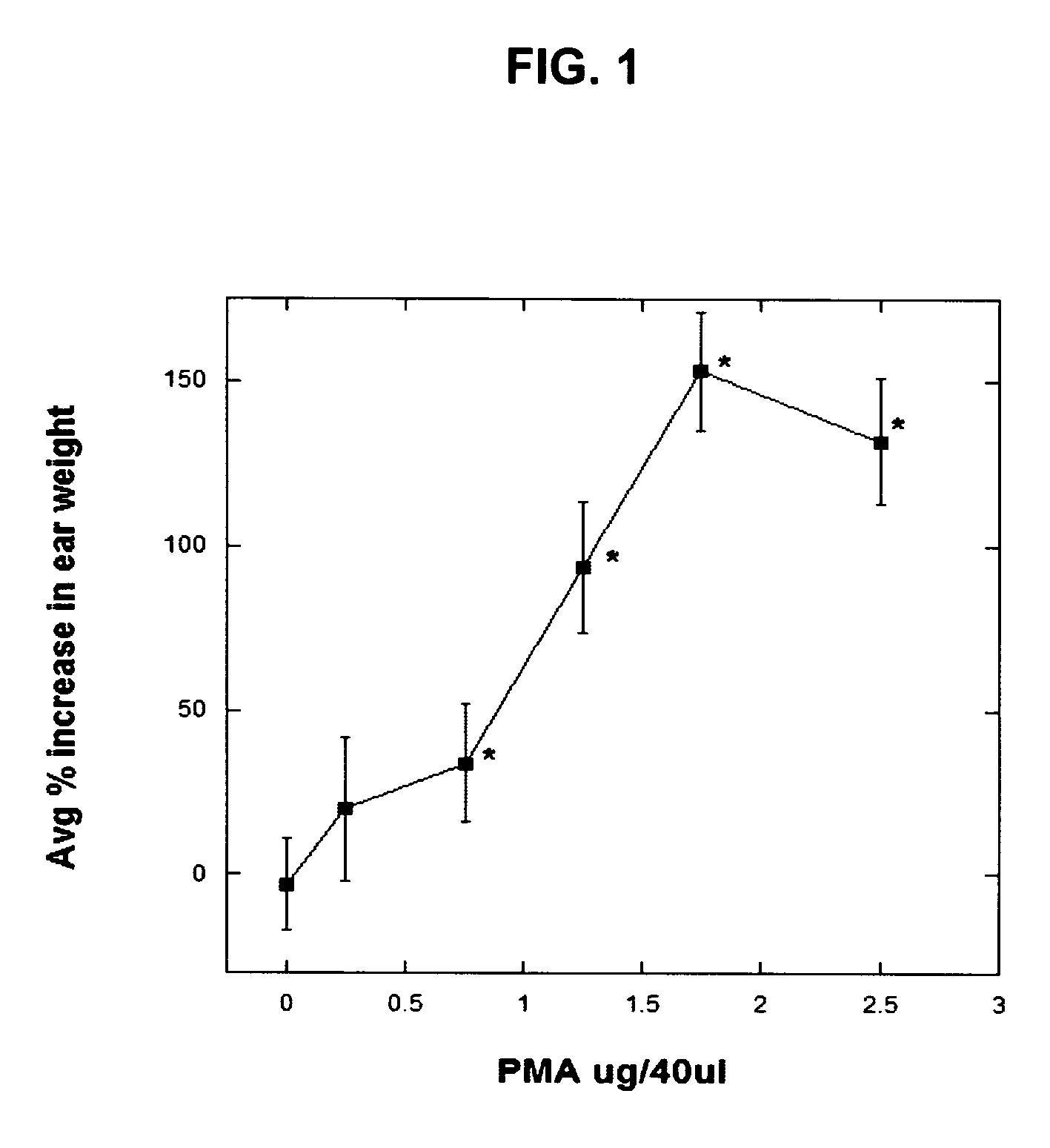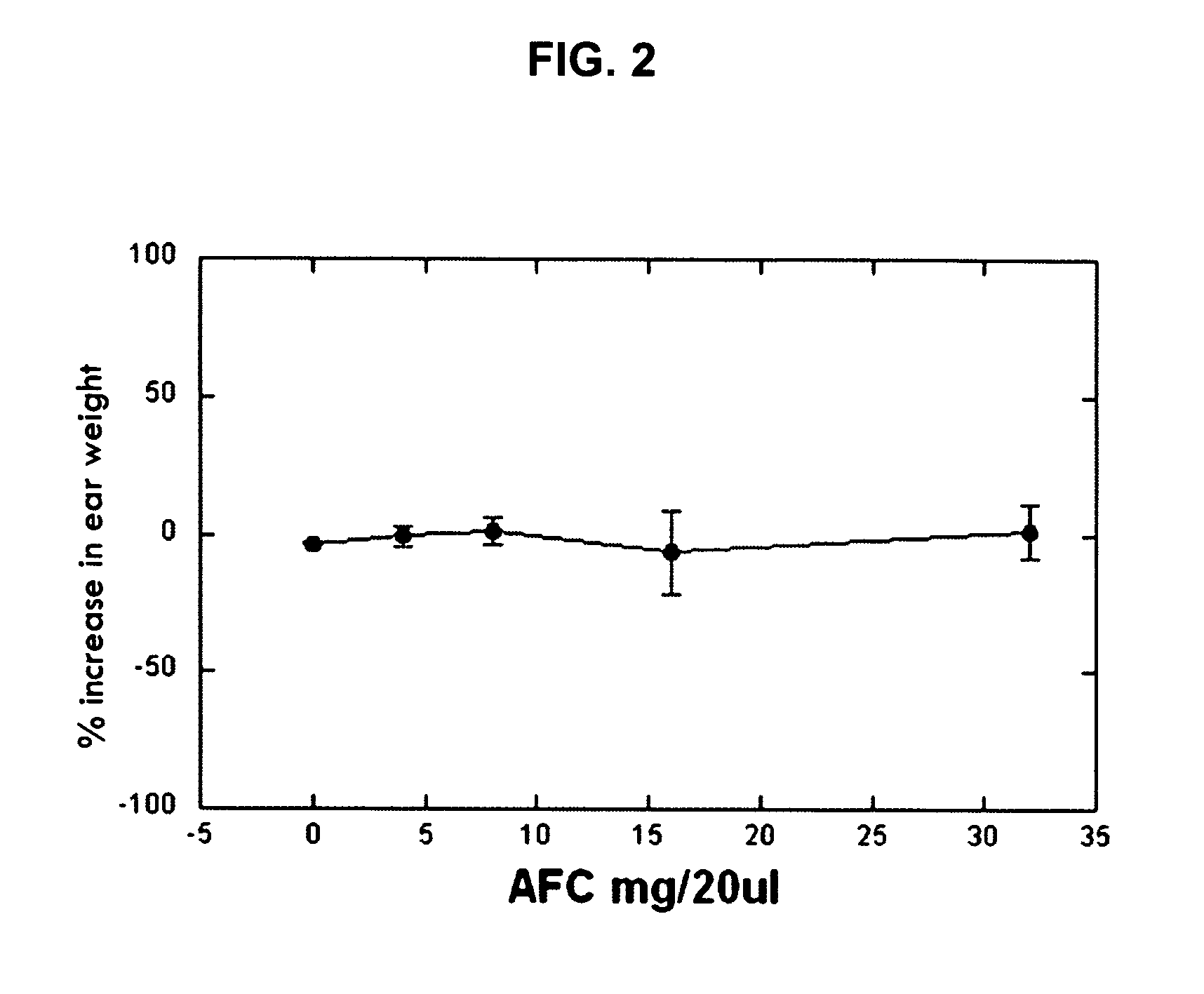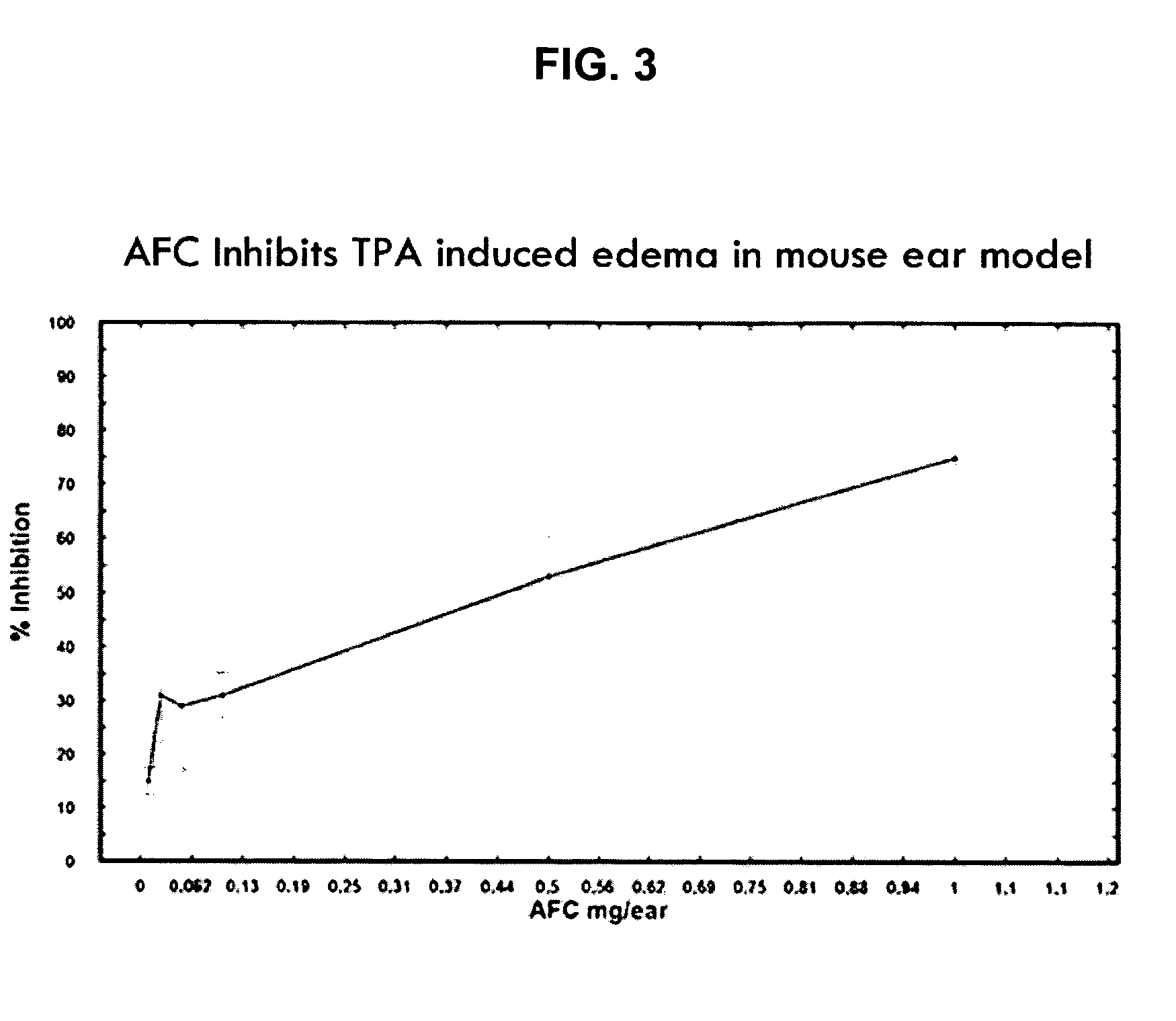Topical compositions and methods for epithelial-related conditions
a technology of epithelial and topical compositions, applied in the field of topical compositions containing polyisoprenylprotein inhibitor compounds, can solve the problems of multiple side effects, tissue damage, generalized systemic effects,
- Summary
- Abstract
- Description
- Claims
- Application Information
AI Technical Summary
Benefits of technology
Problems solved by technology
Method used
Image
Examples
example 1
Polyisoprenyl-Protein Inhibitor Compound AFC in an Acetone Carrier Suppresses TPA-Elicited Edema in the Murine Ear Acute Contact Irritation Model
[0171] In order to assess the effects of the AFC inventive composition for reducing edema in the mouse ear model, an established model of dermal inflammation, was used. (See Carlson, R. P., et al., Modulation of mouse ear edema by cyclooxygenase and lipoxygenase inhibitors and other pharmacologic agents. Agents Actions, 1985. 17(2): p. 197-204; Kuehl, F. A., Jr., et al., Role of prostaglandin endoperoxide PGG2 in inflammatory processes. Nature, 1977. 265(5590): p. 170-3; Trancik R J, L. N., Evaluation of topical nonsteroidal anti-inflammatory agents, in Models in Dermatology, L. Maibach, Editor. 1985, Karger. p. 35-42; and Tramposch, K. M., Skin Inflammation, in In Vivo Models of Inflammation, M. L. Morgan D W, Editor. 1999, Birkhauser Verlag. p. 179-204.)
[0172] The standard agents for initiating inflammation are the phorbol ester, tetrad...
example 2
AFC Inhibits TPA-Induced Neutrophil Infiltration in Mice
[0183] A. TPA Induces Neutrophil Infiltration in Mice.
[0184] Acute contact irritants such as TPA can also induce dermal infiltration of neutrophils. This may or may not be independent of the reduction of edema, as: 1) the maximum neutrophil response is delayed relative the maximal edema response; 2) some irritants will induce edema independent of neutrophil infiltration; and 3) some of the known anti-inflammatory agents reduce one, but not the other. (See Rao, T. S., et al., Comparative evaluation of arachidonic acid (AA)—and tetradecanoylphorbol acetate (TPA)—induced dermal inflammation. Inflammation, 1993. 17(6): p. 723-41.) We sought to determine if topically applied AFC would affect neutrophil infiltration in response to acute topical irritation produced by TPA.
[0185] Neutrophil-infiltration Assay: Swiss Webster male mice (n=6) were treated with 1 μg / 20 μl of TPA as described above in order to assess whether or not TPA i...
example 3
The AFC Inventive Composition Does not Exhibit Systemic Effects
[0201] The effect of AFC on TPA induction of neutrophil MPO activity was compared with two other agents representing different classes of commonly used anti-inflammatories that inhibit inflammation by mechanisms different from AFC. These included dexamethasone, a steroid, and indomethasone, a non-steroid anti-inflammatory drug, which targets cycloxgenases. The action of AFC in this model was, therefore, compared to that of dexamethasone and indomethasone. Each of these agents were tested using the same protocols used to test AFC.
[0202] As shown in FIGS. 8B and 8C, when the concentration of dexamethasone and indomethasone is increased, the contralateral vehicle-treated ear shows increasing inhibition of MPO activity, reflective of inhibition of neutrophil infiltration. This is evidence that topically applied dexamethasome and indomethasone are entering the circulation and exerting a systemic effect with increasing effec...
PUM
| Property | Measurement | Unit |
|---|---|---|
| time | aaaaa | aaaaa |
| time | aaaaa | aaaaa |
| time | aaaaa | aaaaa |
Abstract
Description
Claims
Application Information
 Login to View More
Login to View More - R&D
- Intellectual Property
- Life Sciences
- Materials
- Tech Scout
- Unparalleled Data Quality
- Higher Quality Content
- 60% Fewer Hallucinations
Browse by: Latest US Patents, China's latest patents, Technical Efficacy Thesaurus, Application Domain, Technology Topic, Popular Technical Reports.
© 2025 PatSnap. All rights reserved.Legal|Privacy policy|Modern Slavery Act Transparency Statement|Sitemap|About US| Contact US: help@patsnap.com



